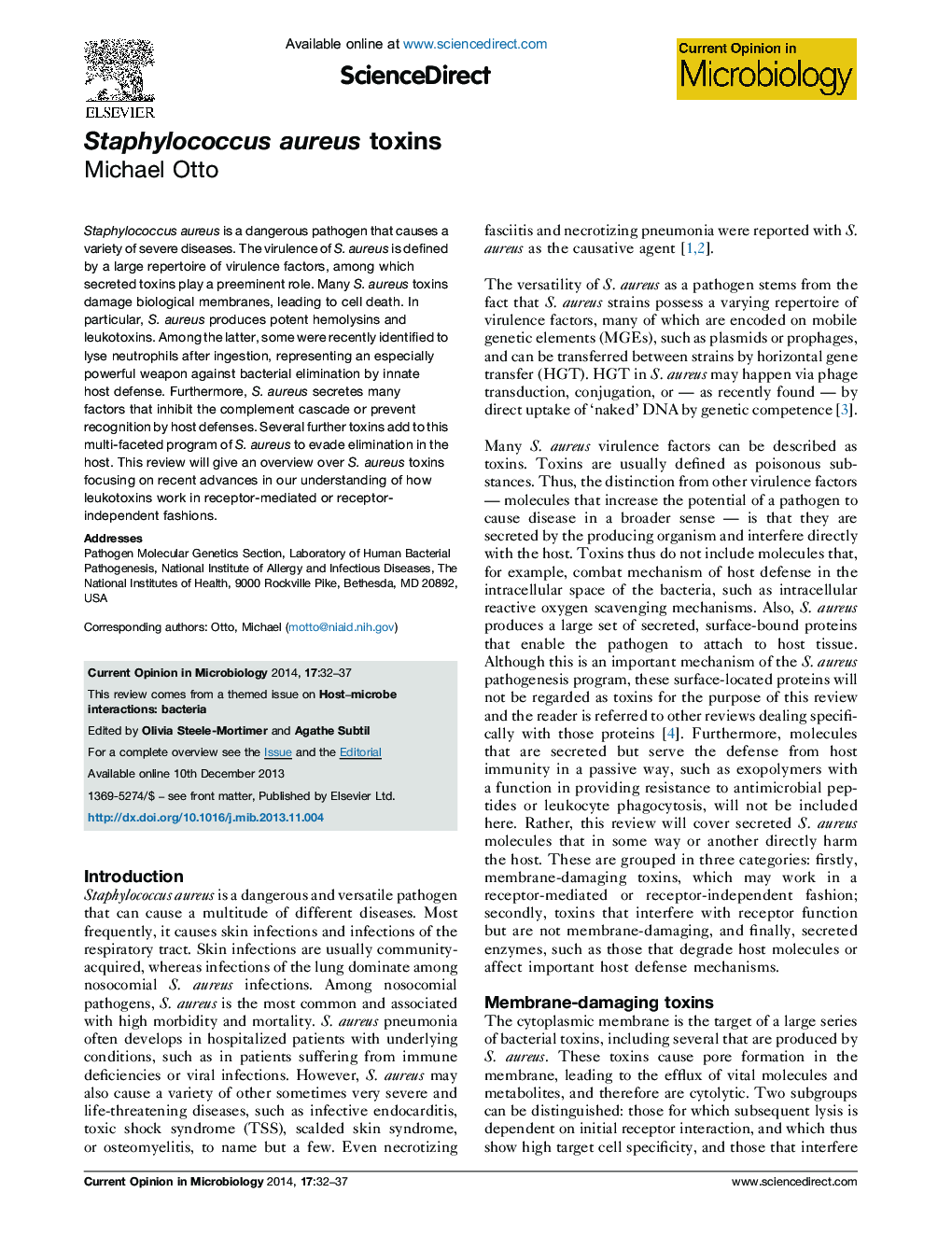| Article ID | Journal | Published Year | Pages | File Type |
|---|---|---|---|---|
| 6132185 | Current Opinion in Microbiology | 2014 | 6 Pages |
Abstract
Staphylococcus aureus is a dangerous pathogen that causes a variety of severe diseases. The virulence of S. aureus is defined by a large repertoire of virulence factors, among which secreted toxins play a preeminent role. Many S. aureus toxins damage biological membranes, leading to cell death. In particular, S. aureus produces potent hemolysins and leukotoxins. Among the latter, some were recently identified to lyse neutrophils after ingestion, representing an especially powerful weapon against bacterial elimination by innate host defense. Furthermore, S. aureus secretes many factors that inhibit the complement cascade or prevent recognition by host defenses. Several further toxins add to this multi-faceted program of S. aureus to evade elimination in the host. This review will give an overview over S. aureus toxins focusing on recent advances in our understanding of how leukotoxins work in receptor-mediated or receptor-independent fashions.
Related Topics
Life Sciences
Immunology and Microbiology
Microbiology
Authors
Michael Otto,
